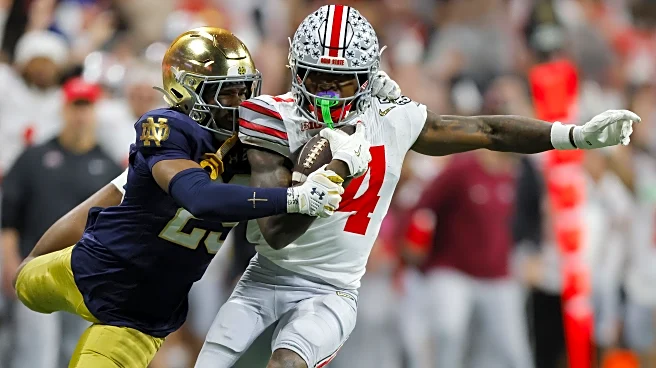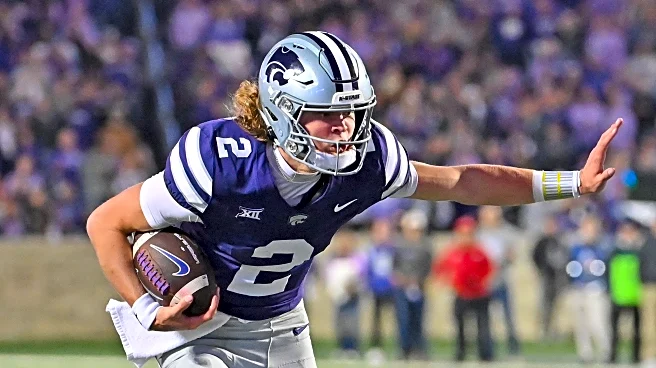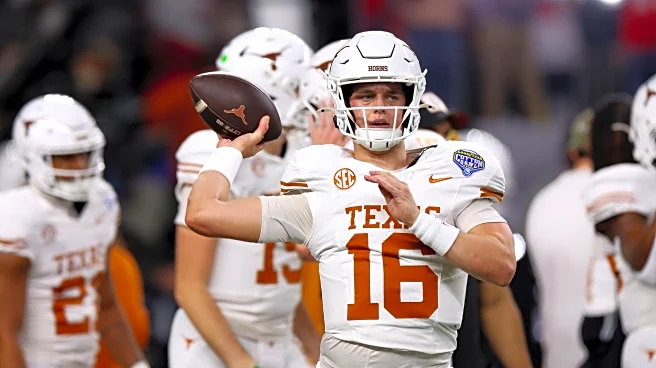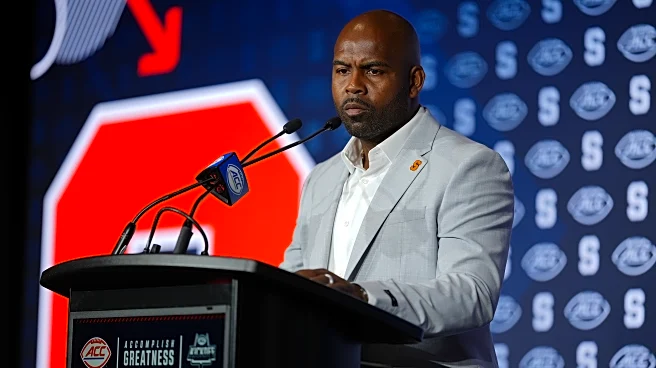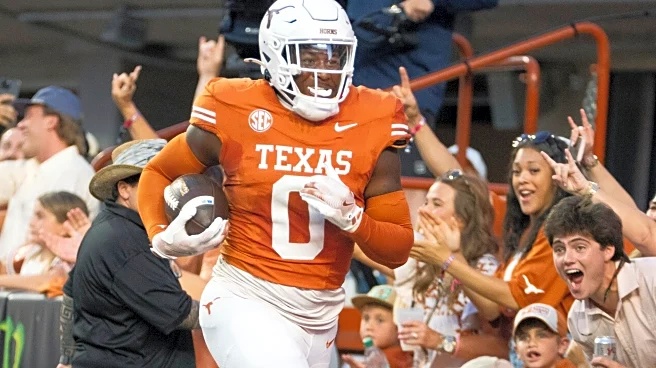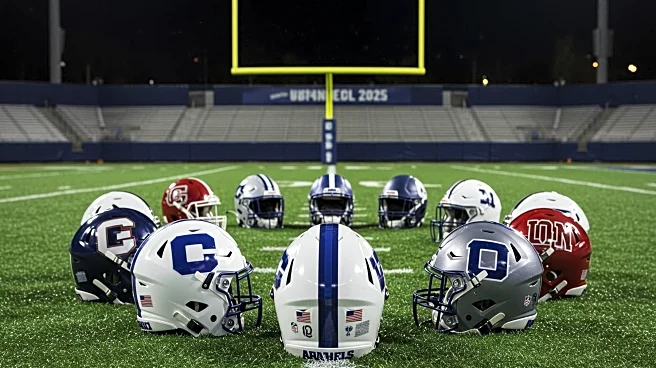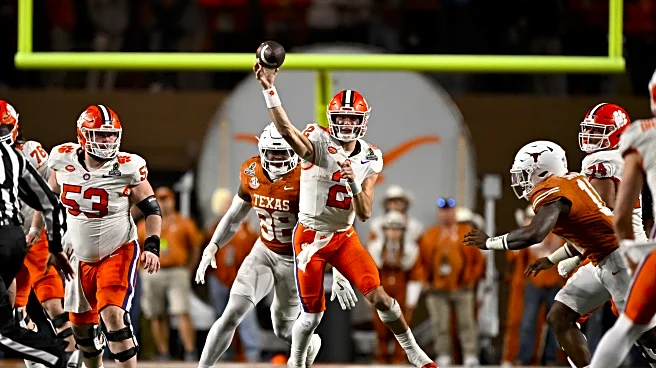
If you have been on this site at all this summer then you likely saw my Big Ten Team Talent preview series. If you missed it, here’s the link to #1 Ohio State and you can find links to the rest at the top of the article. Those previews were based on my system of trying to assess how talented the rosters of the teams in the conference truly are in a college football context.
The idea of a team being “talented” these days usually refers almost exclusively to recruiting rankings. Those still matter but
if someone is a proven producer on the college football field then that should be a major factor if not more important than just the number of stars next to their name from 3 to 4 years ago. I’m not claiming my system is perfect by any means. But I think it’s an interesting way to think about teams and assessing the quality of their rosters before getting into the positives/negatives of their coaching.
Those were Big Ten-specific team rankings and now we’re going to look across all of the power conferences. I start the Big Ten previews between spring ball and training camp which means the team rosters on the websites are incomplete and there are potential medical retirements or player dismissals that haven’t been announced yet. Now that we have complete fall rosters, I’ve gone through every power conference team to make sure I have the full roster to be able to make an apples-to-apples comparison.
That will allow us to take a look to how teams’ rosters stack up nationally right now. But first we’ll take a look at last year’s rankings (the first I did with this methodology) to see how accurate it ended up being.
2024 Team Talent Rankings
There are 11 teams from the power conferences that made the CFP last year and that’s the maximum given the way the tournament is structured at the moment. So if we’re just trying to pick out which teams are favored to make the CFP it means we’re comparing my system’s top 11 to the ones that actually ended up making the bracket. How did that turn out?

Here were the eventual CFP teams with their rank in my team talent score out of 70 power conference teams (still including Wazzu and Oregon State mostly because I still feel a little bad).
Ohio State (1), Georgia (2), Texas (4), Oregon (7), Penn State (8), SMU (9), Notre Dame (10), Clemson (11), Indiana (28), Arizona State (42)
I think getting 8 of the 11 teams that made it correct is a pretty good hit rate. The other teams in my top 11 that didn’t wind up making it were Florida, Texas A&M, and Oklahoma. Unsurprisingly, there are more SEC teams with that level of roster talent than can realistically make it because they’re going to beat up on each other to some degree even with an 8-game conference schedule. Alabama was #12 in the team talent rankings and also were the first team out in the actual bracket. I’ll also take a victory lap on getting SMU that high up when I’m pretty sure no one anywhere had them that high in the preseason and I think my system was probably higher on Indiana and Arizona State than most before the year.
That’s not to say it was a perfect measurement. There were still plenty of misses. Florida was #3. Florida State was #13 (maybe just ignore state schools in the state of Florida?) Central Florida was one spot ahead of Michigan (again with the state of Florida).
All in all, there were 18 schools last year that were above average in the team talent rankings on both offense and defense. 16 of those 18 ended up finishing within the top 22 at SP+ and all 16 of those won at least 8 games. That group also represented 12 of the 18 teams that finished with 10+ wins overall (missing on Indiana, ASU, Syracuse, Iowa St, Illinois, and BYU).
I think all of that is enough justification to take these somewhat seriously and start looking into the 2025 data to see what it says.
2025 Team Talent Rankings
Here’s what the rankings look like for 2025. As you can see, there are more teams that have squeezed into that upper right quadrant with a glut of them in the above average offense and barely above average defense portion including Oregon and USC.

Let’s just speculate though with the premise that 8 out of my top 11 will once again make the CFP. That means you’d be getting 8 participants out of the following group:
1. Alabama, 2. Clemson, 3. Texas A&M, 4. Florida, 5. LSU, 6. Miami, 7. Oklahoma, 8. Auburn, 9. Penn State, 10. Texas Tech, 11. Texas
Huh. Well that’s not going to work. There are 7 SEC teams in that grouping. So to cut it down to 8 that means we’re definitely just chopping off 3 of the ones from that conference. Given the coaching concerns I have at Florida, Oklahoma, and Auburn that seems like a good place to start although it would likely come down to who plays who with unbalanced schedules. Out of that group of 7 SEC teams, Phil Steele ranks the schedules this way: LSU (6th overall), Oklahoma (7th), Florida (12th), Texas A&M (14), Texas (15), Auburn (17), Alabama (21) which I think mostly backs up my initial sentiment to exclude those three.
But even after we do that it means we have 2 ACC teams (Clemson/Miami), 1 Big Ten team (Penn State), and 1 Big 12 team (Texas Tech). Those other 3 spots almost have to go to a combination of the Big Ten and Notre Dame. Given that the talent ranks have Notre Dame #12, Ohio State #14, and Michigan #15 I think it’s safe to say we can go ahead and give them the final 3 spots in this particular accounting of things. Although last year, even if you’d correctly pulled out Florida/Oklahoma/Texas A&M from my top 11 as SEC teams that won’t make it, I probably would’ve thrown in Alabama and LSU to go along with the Big 12 champ instead of Indiana and Tennessee.
All of that is further evidence though that the Big Ten has taken a big step back as a whole relative to the rest of college football in these rankings. Don’t be surprised if the Big Ten goes from having the title winner the last two seasons and 4 CFP participants last year to either 2 or scraping by to find a 3rd this year. Almost two-thirds of the league (11 of 18) went down in the rankings from last year to this year including Ohio State (1st to 14th) and Oregon (7th to 26th). I’ll admit to being a little perplexed how Oregon ended up slipping behind Nebraska since I did the B1G-only exercise but I’ll take it.
The 10 Biggest Fallers from 2024 to 2025 are:
1. Oklahoma State (36 to 58), 2. West Virginia (29 to 59), 3. Central Florida (22 to 51), 4. Iowa (32 to 61), 5. Syracuse (46 to 66), 6. Oregon (7 to 26), 7. California (39 to 57), 8. Minnesota (44 to 60), 9. Tennessee (19 to 34), 10. Georgia (2 to 16)
The 10 Biggest Risers from 2024 to 2025 are:
1. Texas Tech (63 to 10), 2. Illinois (60 to 37), 3. Georgia Tech (45 to 22), 4. Virginia (51 to 30), 5. Rutgers (55 to 34), 6. Nebraska (42 to 23), 7. Mississippi State (62 to 45), 8. Auburn (24 to 8), 9. Pittsburgh (69 to 55), 10. Northwestern (67 to 53)
Yes, 4 of the 10 biggest risers were also from the Big Ten but most of the teams were either stagnant or dropping. Washington fell into the mostly stagnant category as their overall score improved but they still fell four spots from 38 to 42 as several teams leapfrogged them by even more.
What does all of this tell us though from a Husky perspective? Ohio State and Michigan have championship-level defenses and some really nice pieces on offense but the lack of experience at the QB position gives each the potential to be merely very good rather than elite overall if they don’t hit. Both Oregon and Illinois are home games against teams in the top-15 of the preseason AP Poll but the overall roster quality on each suggests they may be starting the season a little overrated. Oh, and UW really better not lose to Wazzu this year. It is not recommended.
Team Talent College Football Playoff Bracket Projection
- Alabama
- Clemson
- Penn State
- Ohio State
- Texas
- Miami
- LSU
- Notre Dame
- Texas Tech
- Michigan
- Texas A&M
- Boise State
